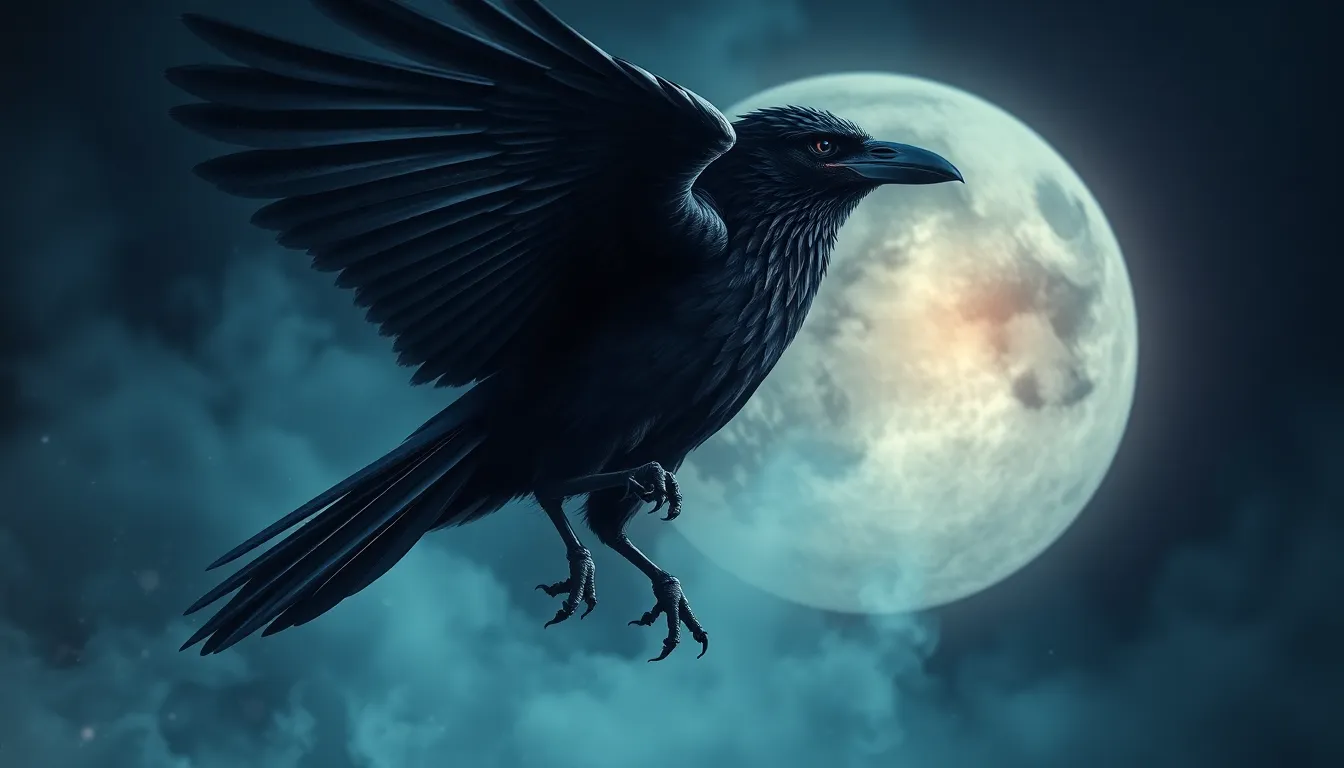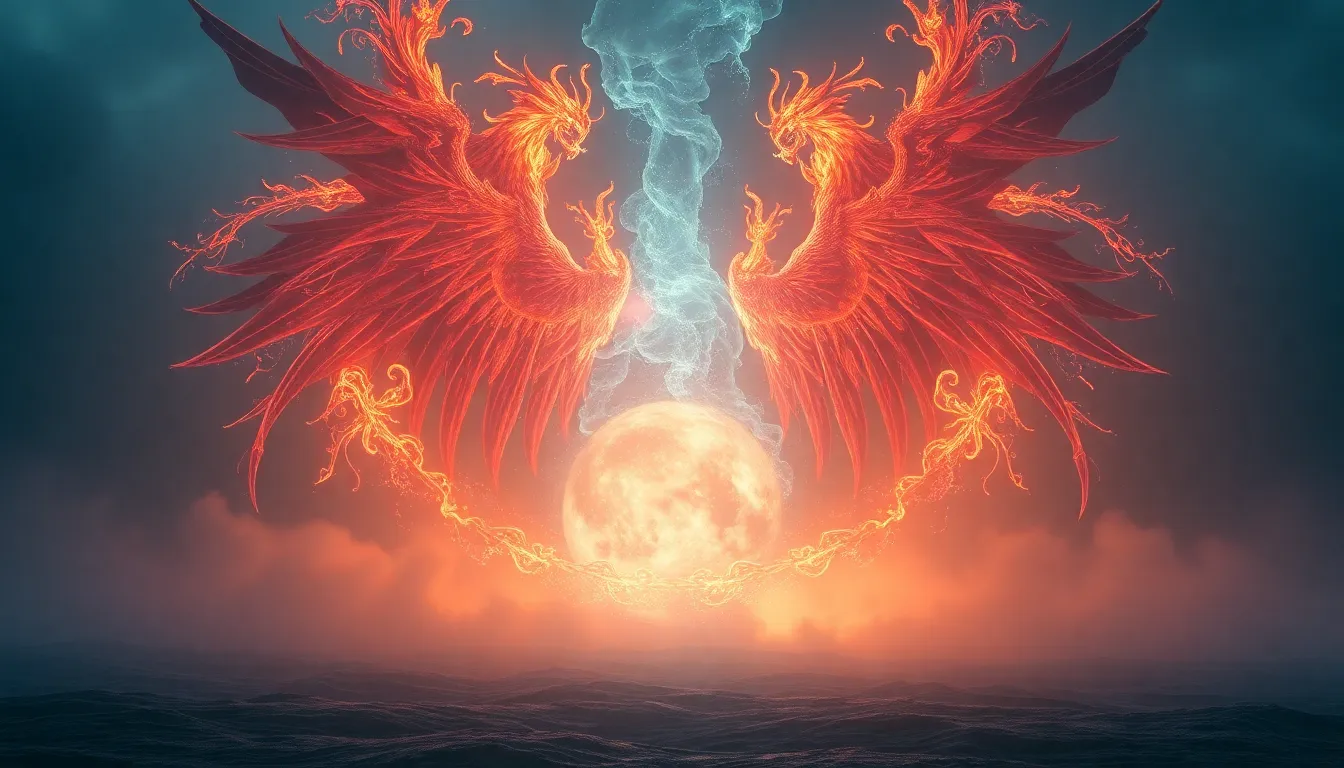The Sacred Raven: Trickster or Messenger in Mythology?
I. Introduction
The raven is a bird steeped in mystery and significance across various cultures. Its black feathers and piercing gaze have captured the imagination of humanity for centuries. In mythology, the raven often embodies dual roles, serving as both a trickster and a messenger, which reflects the complex nature of existence itself.
This article aims to explore the raven’s dual roles in mythology, examining its significance as a trickster and a divine messenger. Through the lens of various cultures, we will uncover the layers of meaning attributed to this enigmatic bird.
II. Historical Context of the Raven in Mythology
Throughout history, the raven has been a prominent figure in ancient mythologies. Its intelligence and adaptability have led many civilizations to revere it, often attributing supernatural qualities to its presence.
Key civilizations that revered the raven include:
- Native American Tribes: Various tribes view the raven as a creator and a trickster, a being that brings both light and dark.
- Norse Culture: In Norse mythology, the raven is associated with Odin, the Allfather, symbolizing wisdom and insight.
- Celtic Traditions: The Celts regarded the raven as a powerful omen, often linked to war and death.
III. The Raven as a Trickster Figure
The trickster archetype is a common motif in mythology, characterized by its cunning, intelligence, and ability to navigate the boundaries of morality. Tricksters often challenge the status quo, bringing chaos and humor to a structured world.
Examples of trickster tales featuring ravens include:
1. The Raven in Native American Stories
In many Native American cultures, the raven is seen as a creator and a trickster. One popular story tells of how the raven stole the sun to bring light to the world, showcasing its cleverness and boldness.
2. Loki and the Raven in Norse Mythology
Loki, the notorious trickster god, is often associated with ravens. In some tales, he transforms into a raven to deceive and outsmart his enemies, illustrating the raven’s role in trickery and transformation.
Characteristics and behaviors of the raven as a trickster include:
- Cunning intelligence
- Ability to manipulate situations
- Switching between roles of hero and villain
IV. The Raven as a Messenger of the Gods
Beyond its trickster qualities, the raven is frequently portrayed as a messenger, carrying news from the divine to humanity. This role emphasizes the bird’s connection to change and transformation.
Stories and myths where the raven serves as a divine messenger include:
1. The Role of the Raven in Creation Myths
In various creation myths, the raven often plays a key role in shaping the world. For instance, in some Native American legends, the raven is credited with creating humanity, symbolizing its significance in the cycle of life.
2. Ravens in Prophetic Visions and Omens
Ravens are often seen as harbingers of change, carrying messages about the future. Their presence can signify impending events, both good and bad, making them powerful symbols in prophetic visions.
V. Cultural Interpretations of the Raven’s Role
The raven’s role varies widely across cultures, leading to differing interpretations. Some cultures hold the raven in high esteem, while others view it with suspicion.
Differences in how various cultures perceive the raven include:
- Positive Connotations: In some traditions, ravens are seen as wise and benevolent, guiding souls and bringing good fortune.
- Negative Connotations: In contrast, other beliefs associate the raven with death and misfortune, viewing it as a harbinger of doom.
The raven also occupies a unique space in folklore and religion, often bridging the gap between the two. In contemporary culture, the raven continues to captivate artists, writers, and spiritual seekers alike.
VI. The Psychological and Symbolic Significance of the Raven
From a psychological perspective, the raven holds deep symbolic significance. Carl Jung identified the raven as a representation of the unconscious mind, embodying the mysteries that lie beneath the surface of our consciousness.
The raven also represents duality, embodying themes such as:
- Life and death
- Chaos and order
This duality makes the raven a compelling symbol for understanding the complexities of human existence.
VII. Comparative Analysis: Raven vs. Other Mythological Birds
When comparing the raven to other mythological birds, such as the phoenix and the owl, we find both similarities and differences.
Similarities and differences include:
- Similarities: Like the phoenix, the raven is often associated with transformation and rebirth, while the owl shares a connection to wisdom and the unknown.
- Differences: Unlike the phoenix, which symbolizes renewal, the raven embodies both creation and destruction, serving as a complex figure in mythology.
The raven’s unique position in global mythology sets it apart, emphasizing its multifaceted nature.
VIII. Modern Interpretations and Cultural Impact
In modern media, the raven continues to be a powerful symbol, appearing in literature, film, and art. Works such as Edgar Allan Poe’s “The Raven” highlight its mysterious and haunting qualities.
The continuing fascination with the raven in contemporary spirituality underscores its significance. Many see the raven as a guide in navigating life’s challenges, embodying wisdom and transformation.
IX. Conclusion
In summary, the raven holds a dual role in mythology as both a trickster and a messenger. Its significance spans cultures and time, illustrating the complexities of existence and the human experience.
Understanding the raven’s place in mythology enriches our appreciation for this sacred bird and invites us to reflect on the deeper meanings it holds in our lives.




